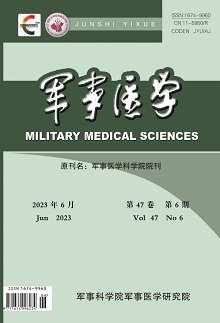Original articles
WANG Jian, LUO Han, DENG Tao, LIN Lu, YANG Xian-jun, YAN Bi-yu
Objective To analyze the characteristics of outpatients and emergence patients at a UN Chinese level 2 hospital before and after the COVID-19 pandemic in Democratic Republic of the Congo (DRC) in order to provide reference for precision medicine. Methods The clinical data on patients treated between Aug. 2017 and Sep. 2019 and between Oct. 2020 and Sep. 2022 in a UN Chinese level 2 hospital was collected in the study. The basic information about these patients, characteristics of systemic disease spectra, and the distribution of diseases were analyzed and compared between the two groups. Results A total of 4524 patients were included in this study, 1379 of whom were were treated after the COVID-19 pandemic. The top three causes of diseases before the epidemic were digestive diseases (21.37%), the consequences of injury, poisoning or external causes (13.07%), and infectious or parasitic diseases (12.88%). However, after the epidemic, they were digestive diseases (27.85%), factors affecting health status or contact with health care institutions (16.82%), and infectious or parasitic diseases (10.95%). The top three diseases before the epidemic were orthopedic (19.37%), dental (17.65%), and respiratory diseases(16.85%), but were dental (25.16%), respiratory (15.88%), and orthopedics diseases after the epidemic(14.58%). The incidence of caries, periodontitis, pulpitis, and upper respiratory tract infections was higher both before and after the epidemic. However, the incidence of COVID-19 accounted for 3.63%, while that of trauma, malaria, and skin diseases was significantly reduced after the epidemic. Conclusion A wide range of diseases was detected in the UN Chinese level 2 hospital before and afters the epidemic. Digestive diseases, factors influencing health status or contact with the health care institutions, infectious diseases or parasitic diseases, some other consequences of injury, poisoning or external causes, and the respiratory system diseases made up a large proportion. Dental, respiratory, and orthopedic disease were prevalent. The incidence of several common diseases changed after the epidemic.
